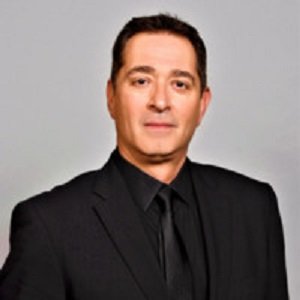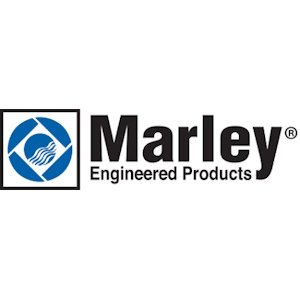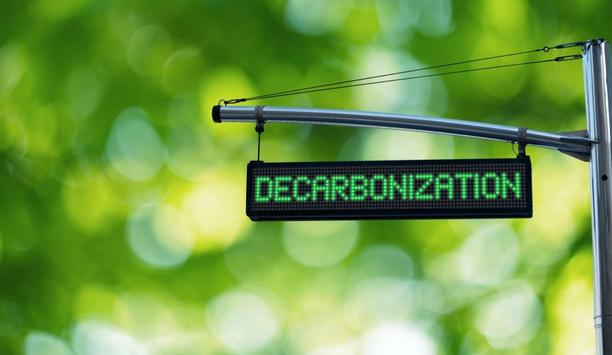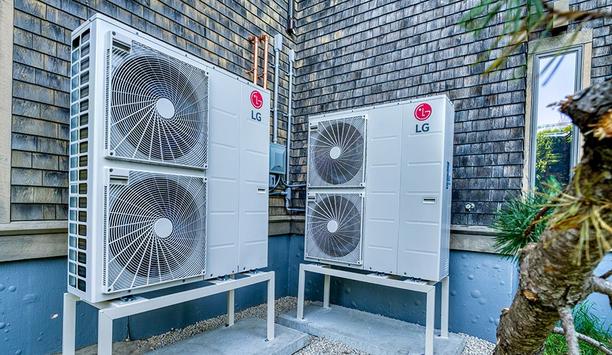Marley Engineered Products - Experts & Thought Leaders
Latest Marley Engineered Products, LLC news & announcements
In facilities with high volumes of foot traffic, the constant opening and closing of doors not only lets in chilly air but can cause heating problems for the entire building. Cold drafts bring the temperatures down, so while main rooms benefit from the warmth of the building’s primary heating system, many other areas are left to deal with the arctic side effects. Vestibules, lobbies, entrance ways, and hallways are frequently populated, so it’s imperative that facilities hunker down and counteract the cold drafts left behind by those entering and leaving buildings. Ideal for entryways Facilities should consider fan-forced wall heaters that provide continuous comfort To help neutralize these blustery winds, facilities should consider fan-forced wall heaters that provide continuous comfort through optimized airflow. Such units are ideal for entryways and other spaces where short bursts of heat are needed – providing a tremendous advantage over gentle heating sources that may not be powerful enough to provide the desired amount of warmth. Opt for electric ceiling heaters However, if wall and floor space is minimal, facilities can instead opt for electric ceiling heaters. Mounted flat or recessed to the ceiling, these heaters are ideal not only for entryways but also in conference rooms, waiting areas, bathrooms and lobbies. No matter the case, both products move heated air with a fan to quickly heat the room from the wall or ceiling. Once the heater turns on, air is moved over a heating element and circulated into the space, making certain that residents are met with warmth and comfort from the time they enter the building until they leave. Specialized Performance Specialized heating units are designed to stop drafts in their tracks before they spread Whether it’s through vents, unsealed windows or cracks and crevices in the building’s foundation, cold air will creep into facilities any way it can. This cool air can make indoor temperatures uncomfortable for occupants and reduce the overall heating efficiency of the facility. Specialized heating units are designed to stop drafts in their tracks before they spread throughout a building. Integrated thermostats or BMS connections Fan-forced wall and ceiling heaters with an automatic delay feature eliminate cold drafts on start-up and discharge residual heat from the heater body during shut down, helping attack drafts at their source, making the best use of available heat and prolonging the life of the heater. To maintain desirable comfort levels, facilities should consider fan-forced wall or ceiling heaters equipped with integrated thermostats or BMS connections for easy adjustment of room temperatures. Commercial fan-forced wall heaters Adjustable thermostat feature allows facilities to alter their heating output needs A hotel’s vestibule, for example, may experience high amounts of foot traffic during check-in and check-out hours. Because less people are coming and going outside of these times, the adjustable thermostat feature allows facilities to alter their heating output needs to ensure heat is not misused and temperatures remain comfortable. For commercial fan-forced wall heaters with striking designs and contemporary looks, Berko® and QMark® offer units to match any room’s décor while supplying an appropriate amount of warmth no matter the time of year. Safety First Safety and style go hand-in-hand. While selecting a heater that fits a building’s aesthetic is important, opting for a high-quality product that protects against common safety risks should be a top-of-mind priority. Fan-forced wall or ceiling heaters are built with easily accessible power on/off switches for added safety during maintenance. Tamper-proof plugs for thermostat holes prevent unwanted changes to the temperature and keep children and pets from getting into places they shouldn’t. Thermal overheat protectors Heaters that include permanently lubricated and enclosed fan motors are shown to have longer lives All fan-forced units also come with thermal overheat protectors that disconnect power in the event of accidental dust or debris blockages to mitigate risk of injury. Additionally, heaters that include permanently lubricated and enclosed fan motors are shown to have longer lives, require less maintenance and gently administer heat throughout a space. Keep in mind that some heaters are noisier than others, so make sure to choose one powerful enough to negate drafts but quiet enough to prevent disturbances from interrupting daily activities. Maintaining Warmth and Comfort Drafts bring cold air and a lasting chill into heated spaces every time a door opens, especially during the colder months. To offset the frigidness, consider installing a fan-forced wall or ceiling heater to regain suitable levels of warmth and comfort for all building occupants. Berko and QMark’s commercial fan-forced wall and ceiling heaters provide the strongest, safest sources of heat for those chilly spaces.
Modern heating is no longer a matter of simply delivering warmth; it’s about creating environments that blend comfort, efficiency, and esthetic harmony. In a world increasingly defined by open spaces, sleek architecture, and smart technologies, heating systems must evolve to meet complex demands without disrupting the visual and functional flow of a space. Art and Science of Modern Heating Striking the right balance between esthetics and functionality presents a challenge Over the course of the past several decades in the heating industry, professionals have witnessed firsthand the shifts in priorities among architects, designers, and building managers. Heating is no longer a secondary consideration—it has become central to how people experience space. Striking the right balance between esthetics and functionality presents both a challenge and an opportunity for innovation in the field. The Push for Invisible Comfort Heating systems have historically been functional but visually obtrusive. Now, the emphasis is on designing systems that are discreet or entirely hidden. Architects increasingly seek solutions that allow the design to take center stage while maintaining thermal performance. For instance, in spaces like high-rise buildings with expansive floor-to-ceiling windows, the challenge is twofold: preventing heat loss while preserving unobstructed views. Electric convection heaters, often recessed into the floor or integrated within cabinetry, offer a solution by providing targeted warmth without compromising sightlines. How modern heating can overcome spatial constraints Custom infrared system was designed to ensure spectator comfort in frigid conditions Similarly, outdoor spaces—once considered seasonal—are now being transformed into year-round assets. This is particularly evident in commercial applications like stadiums and hospitality settings. A notable example is the Buffalo Bills’ Highmark Stadium, where a custom infrared system was designed to ensure spectator comfort in frigid conditions. These units combined snow-melting functionality with precise heat distribution, demonstrating how modern heating can overcome spatial and environmental constraints. When Customization Becomes Essential The versatility of heating systems is often tested in unique spaces where conventional solutions fall short. Customization plays a pivotal role in addressing these challenges, allowing heating systems to meet both functional needs and esthetic goals. One striking example comes from the world of luxury yachts. On a high-end vessel, the design required radiant heating panels to be subtly integrated into the outdoor deck area. The goal was to maintain a sleek design while providing warmth for guests enjoying the space during cooler evenings. This project showcased how thoughtful engineering could enhance both comfort and design. In metropolitan high-rises, convection floor heaters with custom finishes are another testament to how heating can adapt to diverse architectural needs. These heaters often feature bespoke designs, blending seamlessly with interiors while addressing practical needs such as condensation control near large windows. The Role of Smart Technology in Heating Advances in technology are reshaping how heating systems interact with spaces and occupants Advances in technology are reshaping how heating systems interact with spaces and their occupants. Smart heating systems, integrated with touch-activated controls and connected to Building Management Systems (BMS), are becoming the norm. These technologies go beyond esthetics, offering practical benefits such as energy efficiency and user convenience. For example, smart controls allow building managers to monitor and adjust heating remotely, optimizing energy use while ensuring comfort. This remote capability significantly reduces labor by eliminating the need for manual, individual system checks. Additionally, it minimizes downtime in case of malfunctions, as issues can be detected and addressed promptly. In residential and commercial applications alike, this marriage of technology and design enhances the functionality, sustainability, and operational efficiency of heating systems. Sustainability and the Shift Toward Decarbonization As the construction industry moves toward greener practices, heating systems must align with evolving sustainability standards. Electrification is at the forefront of this shift, replacing traditional gas-powered systems with cleaner, more efficient electric options. At the same time, there’s a growing emphasis on material sourcing and manufacturing processes. Heating products are increasingly designed to minimize their carbon footprint, from production to operation. For instance, infrared heating panels not only offer energy efficiency but also align with the esthetic priorities of modern architecture. Their sleek design and reduced energy consumption make them an ideal choice for eco-conscious projects. esthetic Challenges in Heating Design Collaboration between engineers, architects, and designers is key to achieving a result One of the less-discussed aspects of modern heating is the esthetic challenge. How do they integrate a functional system into a space without disrupting its design? The answer lies in customization and flexibility. For example, Marley Engineered Products, a pioneer among engineers and contractors for comfort heating and ventilation systems, recently launched a customizable recessed infrared heater targeted for high-end hotel entryways. This solution allows heating systems to seamlessly blend into the architecture of hotels, while maintaining the necessary thermal output. In such projects, collaboration between engineers, architects, and designers is key to achieving a result that satisfies all parties. Bridging Front-of-House and Back-of-House Needs While esthetics are crucial in public-facing areas, industrial and mechanical spaces prioritize durability and performance. Heating systems in these environments must meet strict safety and performance standards. For instance, unit heaters designed for industrial use often require features like wash-down capabilities or explosion-proof certifications. These systems, though less visually focused, are critical for environments like food processing plants or oil refineries. Balancing these requirements with reliability and cost efficiency is a constant challenge—and one that demands engineering expertise. Looking Ahead: The Future of Heating Heating industry is at a crossroads, shaped by technical advances and changing expectations The heating industry is at a crossroads, shaped by technological advancements and changing expectations. As buildings become more energy-efficient and regulations push for lower carbon footprints, heating systems must adapt. The future lies in solutions that offer comfort on multiple levels—thermal, visual, acoustic, and technological. By working closely with designers and understanding user needs, they can create systems that enhance spaces in every way. Whether it’s a luxury hotel, a bustling office, or an industrial facility, heating is no longer a background concern. It’s a defining feature of how they experience and interact with the environments. User-Centric Design: Bridging Comfort and Innovation Creating effective heating solutions requires more than engineering prowess—it demands a deep understanding of the spaces these systems will inhabit and the people who will depend on them. At the heart of modern heating design is the ability to listen to users, identify challenges, and craft solutions that address both functional requirements and esthetic expectations. The design process often begins with gathering insights directly from the field. Whether through trade shows, customer site visits, or collaborative workshops with architects and specifiers, understanding the nuances of different applications is essential. A recurring theme in these conversations is the desire for heating systems that are unobtrusive, seamlessly integrated into a building’s automation systems, and capable of meeting increasingly stringent energy standards. Designing convection heaters Recessed heating solutions have gained popularity in response to a demand for clean For example, recessed heating solutions have gained popularity in response to a demand for clean, uninterrupted lines in modern interiors. By designing convection heaters that sit flush with the floor or fit discreetly within cabinetry, it becomes possible to deliver targeted warmth without detracting from a room’s visual appeal. These heaters often feature customizable finishes, allowing them to harmonize with surrounding materials—a subtle detail that speaks to the broader trend of designing systems to "disappear." How innovative engineering Can transform unworkable spaces Customization frequently plays a central role in addressing unique needs. In projects like luxury yachts or outdoor hospitality spaces, standard solutions rarely suffice. Radiant ceiling heaters designed to provide warmth for outdoor decks or stadium seating illustrate how innovative engineering can transform seemingly unworkable spaces into areas of comfort. Testing and refining such systems ensures they meet safety and performance standards while aligning with the esthetics demanded by high-profile environments. Building standards and user expectations User-centric approach is critical as building standards and user expectations continue to evolve Importantly, these solutions are not just about the products themselves but about the expertise required to implement them effectively. Engineers and designers must work collaboratively, drawing on decades of experience to solve challenges that vary widely across applications. Marley Engineered Products’ approach is rooted in solving such challenges—blending technical precision with a deep understanding of the end user’s experience. This iterative, user-centric approach is critical as building standards and user expectations continue to evolve. Heating is no longer an isolated system but a core component of how spaces are designed, built, and experienced. By focusing on adaptability, integration, and innovation, modern heating solutions reflect the diverse and dynamic needs of contemporary architecture. Final Thoughts Heating may seem like a technical concern, but it’s deeply tied to the human experience of space. By balancing esthetics, functionality, and sustainability, they’re not just designing systems—they’re shaping environments that support comfort, productivity, and beauty. As the industry evolves, the opportunity to innovate and adapt will only grow. It’s an exciting time to be part of this journey, and I look forward to what the future holds for heating solutions that truly enhance the spaces they inhabit.
Marley Engineered Products (MEP), LLC., a choice for electric comfort heating and ventilation systems, proudly announces the unveiling of its new brand identity. This refresh aligns Marley Engineered Products more closely with its parent company, SPX Technologies Inc., reinforcing the brand's commitment to delivering innovative, sustainable solutions for a changing world. innovative heating technologies The rebranding initiative for Marley Engineered Products, featuring a new logo that harmonizes with SPX Technologies' visual identity, is part of a broader strategy to unify the brand with its parent company and strengthen its market position. This move emphasizes SPX Technologies' global strength and robust HVAC segment and signifies Marley Engineered Products' renewed focus on sustainable and innovative heating technologies. By integrating into SPX Technologies' visual identity system, the rebranding reinforces the company's dedication to quality-engineered, climate-conscious solutions and its modern approach to heating solutions. electric heat comfort heating Michael Benton, VP & GM of Electric Heat stated, "As we adopt and migrate to the visual identity system of SPX Technologies, we are further aligned with the global strength of our parent company and our strong HVAC segment." "This refresh not only represents our evolution as a refreshed company brand but also our commitment to pioneering the charge in electric heat comfort heating solutions." customer expectations The future of electric heating looks bright for Marley Engineered Products. In June 2023, SPX Technologies expanded its Electric Heat portfolio by integrating the ASPEQ Heating Group, LLC alongside Marley Engineered Products LLC. This strategic partnership leverages their combined strengths and well-established brands, positioning both companies to exceed customer expectations and foster innovation across residential, commercial, industrial, military, marine, and transportation sectors.
Insights & Opinions from thought leaders at Marley Engineered Products
For 100 years, the Marley brand has provided evaporative cooling towers and fluid coolers, ranging from large industrial applications to smaller plants such as offices. The equipment is used to cool hospitals, data centers, and large commercial buildings. In data centers, for example, evaporative cooling uses 60% less power than air-cooled systems. Events at 100th anniversary SPX Technologies, the corporate owner of the Marley brand, is celebrating its 100th anniversary in 2022. Among the events marking the anniversary is a series of Road Shows. A big truck displaying key products will visit 50 locations across the United States. As it marks the anniversary, the Road Show also seeks to support the sales representative channel. There will also be marketing giveaways and promotional offers along the way. For SPX’s employee base, a global event in May 2022 will be a two-and-a-half-day celebration including visits to the research and development (R&D) center and manufacturing locations in Overland Park, Kan. Marley Company acquisition After its acquisition by SPX Corp. in 2001, Marley Cooling Technologies became SPX Cooling Technologies Both Marley Cooling Technologies (SPX Cooling Technologies) and Marley Engineered Products, another SPX business, evolved from the same parent company, The Marley Company. The history goes back to 1922 with the founding of predecessor company PPEC (Power Plant Equipment Company), which used the trade name “Marley” for their products, a combination of the names of founders Leon T. Mart and Chester Smiley. The Marley Company was incorporated in 1928. The company grew consistently through a series of acquisitions and ownership changes. After its acquisition by SPX Corp. in 2001, Marley Cooling Technologies became SPX Cooling Technologies, and it still uses the globally recognized Marley brand. Tested solutions, energy savings SPX and Marley customers get the benefit of 100 years of experience supplying products that have withstood the test of time. “We have tremendous experience engineering to customer needs,” says Ankush Kumar, President, Global HVAC Cooling, SPX Corp. “The customer benefits from the collective experience of 100 years of solving complex problems. We provide true, tested solutions that meet customer needs reliably and effectively.” Marley is built on the value proposition of quality, innovation, and sustainability, the latter based on Marley products’ use of evaporative cooling to produce energy savings and low environmental impact. Marley technology consumes 20 to 25% less energy than competitive products. Focus on HVAC innovation Marley designed the first cooling tower 100 years ago, which holds more than 200 U.S. cooling tower design patents In fact, Kumar says environmental issues have replaced cost as the focus of HVAC innovation in the last several years. He has also seen more emphasis on connectivity, with better control packages enabling building managers to access more information from a BMS (building management system). In the area of innovation, Marley designed the first cooling tower 100 years ago, which holds more than 200 U.S. cooling tower design patents and was an early innovator in efficient heat transfer such as crossflow cooling towers and film fill. Marley created the first factory-assembled cooling tower, the Aquatower, in 1947. It changed the industry and the future of the company, transitioning from field-directed systems to factory-assembled systems that provide better quality and require less labor for installation. Industrial grade construction, employee relationships Quality is displayed in Marley's reputation for industrial-grade construction, inventive engineering, and manufacturing. “Our people are a big part of the mission,” says Kumar. “We have an engineering climate throughout our company, and some of the employees are the second generation.” One recent retiree, 78 years old, noted that Marley has put food on his table since he was 2 (his father was also a long-time employee). “Our employee relationships remain strong because we believe in core principles of developing employees,” says Kumar. The company’s reputation and long legacy attract the top young talent from the engineering community. energy-efficient closed-circuit systems We consistently make products that provide more cooling for the same or lower energy" “We listen to the voice of the customer and seek to create new products that are even more reliable and better performing,” says Kumar. For example, the MH Element Fluid Cooler is a closed-loop HVAC system that combines the function of a cooling tower and heat exchanger into one system, among the most energy-efficient closed-circuit systems on the market. “Our consistent focus in recent years has been on energy efficiency,” says Kumar. “We consistently make products that provide more cooling for the same or lower energy.” SPX is also environmentally conscious when it comes to manufacturing processes, such as handling waste. The fill (heat transfer media) is made of recycled materials. Webinars to install systems The 100th anniversary comes on the heels of a pandemic that challenged the company to protect employees while meeting customer needs. The company focused on safety with extra precautions to protect the employee base, and they continued to pay employees who were exposed to COVID. Like many companies, they struggled to maintain a collaborative culture in a time dominated by Zoom. To communicate with customers, the company created webinars about how to install and specify systems. They ensured customers in the engineering community could get their questions answered remotely. They adjusted to a “hybrid” model (in which employees work on-site two to three days a week), seeking to maintain a family-friendly environment throughout. Addressing supply chain problems The global company does business in more than 80 countries and has manufacturing plants in the Far East and the United Kingdom. There are also four manufacturing plants in the U.S., which mostly supply the needs of U.S. customers. It is harder for foreign competitors to meet the demand for equipment that is large and “made to order.” Currently, SPX is grappling with supply problems, which they are addressing with the help of their supply chain partners. “Our challenge in the medium- to long-term is to offer products that continue to appeal to customers in the future,” says Kumar. The strategic goal is to double the size of the business in the next several years, including expanding product lines (based on innovation) and acquisitions. Clearly, the next 100 years will continue to be eventful.
From A To L: Your A2L Transition Guide
DownloadLeveraging Radiant And Hydronics To Help Achieve Decarbonization Goals
DownloadSealed Connectors In Harsh Environments
DownloadPowering And Cooling Next Generation Data Centers
DownloadDebunking Myths To Promote A Bright Future For Heat Pumps
DownloadMarley Engineered Products BKOC2578W commercial baseboard heater
Marley Engineered Products BKOC2573W commercial baseboard heater
Marley Engineered Products BKOC2504W commercial baseboard heater



















